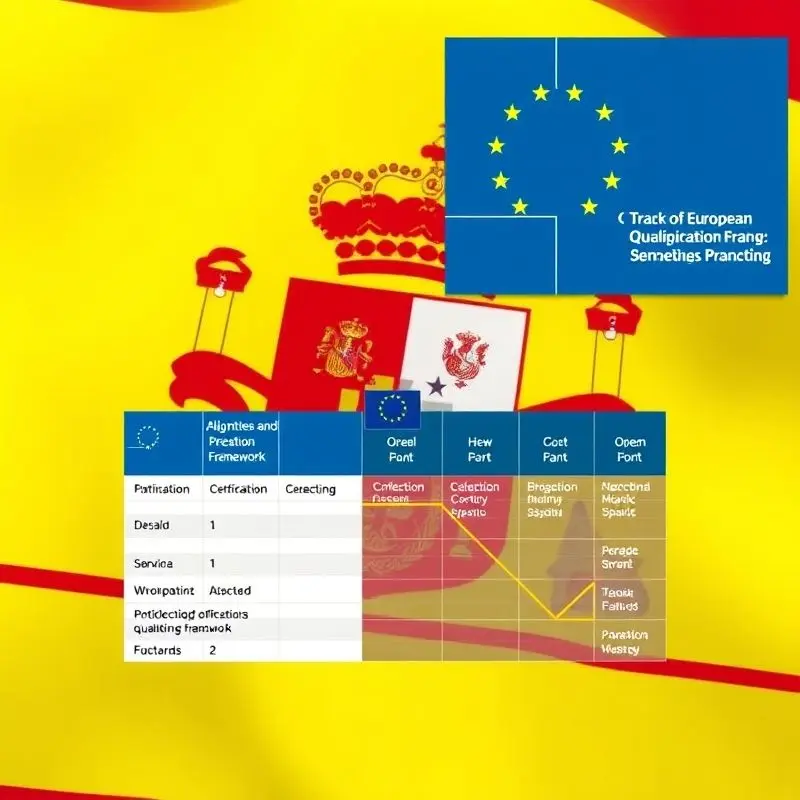Discover Professional Training in Spain Like Never Before

Are you wondering how to professional training in Spain can transform your career prospects? Prepare to be amazed. Spain’s vocational training system—known as Formación Profesional (FP)—is reshaping youth employment and paving pathways to high-paying roles. This guide reveals why professionals and students alike are making the smart choice to enroll now.
What Is Professional Training in Spain?
Formación Profesional (FP) is a robust vocational education system in Spain offering multiple levels:
- Basic Vocational Training (ages 15–17)
- Intermediate Grade (Grado Medio) – Technicians, 2‑year programmes
- Higher Grade (Grado Superior) – Equivalent to university, enabling university access afterward
FP blends practical classroom modules with mandatory internships in real workplaces. This results in graduates ready to meet industry needs—especially in sectors like mechatronics, logistics, tourism, healthcare, and IT.
Key Trends & Growth in FP
Enrollment Soars
In 2021–22, over one million students enrolled in vocational training in Spain—a nearly 30% jump in just five years. 51% opted for Higher VET courses delivered across 67% of Spain’s 3,900+ centers.
Rising Dual Vocational Training
Spain’s Dual Vocational Training model—akin to the German apprenticeship system—integrates training centers with company work placements. Though still under 5% of total vocational enrollments, numbers are climbing rapidly, especially in Catalonia where enrolment soared from under 600 in 2012 to nearly 9,000 in 2020.

Benefits of Vocational Training in Spain
1. Immediate Employability
More than half of VET graduates land their first job within a year of graduation; many receive job offers during their internships. Employers value their practical readiness.
2. Up-to-Date, Technical Skills
Courses are designed in collaboration with sectors: for example, administration & management programmes grew 13.2% in demand; STEM-based and mechatronics programmes are also booming.
3. Cost-Effective & Fast
FP programmes typically last 1–2 years, far shorter than university, and they are more affordable, with scholarships and financial aid widely available.
4. Practical Experience
Internships (FCT) ensure students work in real settings for 3–6 months, building industry networks early and accelerating transition to work.
5. Pathway to University
Holding a Grado Superior opens the door to university studies. So FP isn’t just terminal training—it’s a bridge to academic advancement finenza.com.
6. Employer Costs & Returns
Employers benefit: studies show that apprenticeship training—even if costing €300/month—is profitable by mid-term due to reduced recruitment costs and higher productivity.

How to Enroll in Training in Spain
If you’re asking “how to training Spain”, here’s your step-by-step:
- Decide your level:
- Basic (for under‑18s without ESO)
- Intermediate (requires ESO)
- Higher Grade (requires high school or entrance exam)
- Choose a field:
- Popular fields: multi-platform app development, mechatronics, healthcare, logistics, tourism, electrical installations.
- Find an institution:
- Over 3,900 FP centers across Spain offer Higher VET; many private/international options also exist.
- Apply & secure funding:
- Many centers offer financial aid, tuition scholarship, or flexible payment for eligible candidates.
- Complete mandatory internship (FCT or Dual):
- Most programmes include a final internship of 3–6 months. Dual VET students alternate between classes and paid company work under contract.
- Graduate & transition:
- Many students are hired immediately; some move into university programmes or specialisation courses.

Success Stories That Prove It Works
Salesian Vocational Centers
Salesian-run FP centers across Spain serve thousands of students. One Madrid centre offering telecommunications installations saw a surge of former university students switching to FP—becoming more engaged, satisfied, and job-ready .
Hogar Fundación Institute, Vigo
Celebrating 75 years of vocational training, the institute reports 80% of its graduates are recruited directly after completion, thanks to a hands-on, industry‑linked curriculum.
Key Sectors & Specialisations
| Sector | High-Demand Vocational Profile |
|---|---|
| Information Technology | App development, software support, ICT technician |
| Industrial & Mechatronics | Robotics, automation, electrical/automatic systems |
| Healthcare & Nursing | Auxiliary nursing care, elderly services |
| Tourism & Hospitality | Accommodation management, catering |
| Logistics & Supply Chain | Warehousing, transport, procurement |
These programmes tailor hands-on training with current technologies (e.g. AR, 3D printing, virtual simulators) making students industry‑ready.

Why Choose Spain for Your Vocational Path
- Moreover, Spain’s educational authorities align vocational qualifications with the European Qualifications Framework (EQF), boosting qualification recognition across Europe and lifelong learning mobility.
- However, the dual system is still expanding—meaning early participants gain advantage in emerging markets.
- Moreover, the job market experiences increasing skills shortages in technical sectors, which FP graduates directly address.

Sample Section Visualisation & Layout
For each major section above, envision the following layout to enrich your article:
- Header: bold, curiosity-driven subtitle
- Introduction paragraph: why it matters, backed by one data point
- Infographic or flowchart: showing levels of FP (Basic → Intermediate → Higher → Dual)
- Bullet list: key advantages or steps
- Illustrative case study: short quote or story (e.g., “I changed law for antennas… today I’m very happy.”)
- Call-out box: pro tip or key takeaway (e.g. “Enroll early in Spring admissions to secure paid internship spot!”)
Strong Commercial Call‑to‑Action
Are you ready to enroll in training in Spain and unlock high employability? Many centres allow online applications year‑round, especially for higher-level vocational training in Spain. With scholarships, internships, and dual work‑study options available, there’s never been a smarter, more efficient route to a skilled career than now.

Your Road to Career Success
Vocational training in Spain is not a fallback—it’s a forward-thinking strategy offering quick entry, concrete skills, and access to career growth or university. Whether you’re seeking to learn how to training Spain or aiming to enroll in training Spain with confidence, FP offers a proven, employability-driven education model.

